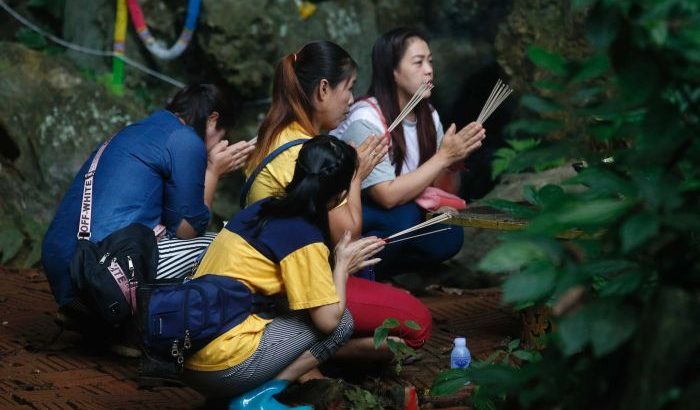The willingness to take great physical risks is inspirational, writes David Quinn
People love their heroes. Heroes are always the best in their field. During the World Cup, countries looked to the heroes in their squads. For Portugal it was Cristiano Ronaldo. For Argentina it was Lionel Messi. For Croatia it was Luka Modric. For France it was mainly Kylian Mbappe. Sometimes the hero was the whole team.
We expect our heroes to excel, to go beyond the ordinary. That’s what makes them stand out, it’s what makes us admire them and often want to be like them.
Sometimes we expect superhuman qualities from our heroes. We expect them almost to be demi-gods. Argentina wanted Messi to produce magic every time he touched the ball. In the event, he was only able to do so sporadically but it shows how our expectations for our heroes can almost literally reach the heavens.
Catholics have their saints. They are often our heroes. Saints can sometimes perform literal miracles and we pray for their intercession. But miracles are simply a sign of saintliness, of someone’s holiness. For the most part we love or admire saintly people for their heroic selflessness and the saint can be a mother or father who never puts themselves first.
Others are more obvious, like Mother Teresa who left the relative comfort of her convent school in Calcutta in the 1940s to help the poor and the dying in the slums of the city for the rest of her life, her “call within a call”.
Example
Recently, we have had a superb example of raw physical courage on display, namely the rescue of the 12 boys plus their football coach from deep within a cave in north Thailand.
The rescue captured the imagination of the world. The coach had led the boys into the huge system of caves after soccer practice. Monsoon season was not yet due to begin, so it was supposed to be safe to go into the caves. But torrential rains struck early and the cave system quickly filled up with water. The group had to make their way one and a half miles inside the caves until they found a space high up enough to be safe from the waters.
There they huddled in pitch blackness for nine days until two divers found them. Think about that. What kind of strain must it put on someone’s mind when they are sitting in utter darkness, deep underground, without food, wondering if anyone will ever find you, thinking you are going to die as one day follows another?
In a way, their situation was even worse than that of the miners in Chile in 2010 who were trapped underground then. They were grown men, not boys, and there were 33 of them, not 12 boys and one man. They had artificial light. They had some food. They had equipment which allowed them to search for water on their own.
The men who rescued the boys took huge physical risks to do so. A team of 90 divers was assembled in the end, but 18 performed the actual rescue. They were comprised of 13 foreign divers and five Thai navy seals.
They were all volunteers. The foreign divers had no connection to Thailand. When a plea was made to them to help find and rescue the boys they said ‘Yes’ without hesitation. This was despite the extreme difficulty of the operation.
The men had first to explore the immense complex to find the boys, often swimming in conditions of near pitch blackness because of the muddiness of the waters. Sometimes the tunnels were so narrow they had to remove the oxygen tanks from their backs to squeeze through.
Finally, two of the divers, John Volanthen and Rick Stanton, found the boys. But that was only the start, because now they had to find a way to get them out safely before monsoonal rain completely flooded the caves.
The extreme riskiness of the operation was proven when one of the divers – Saman Kunan – died after his tank tragically ran out of oxygen. He was a former Thai navy seal who was under no direct moral obligation whatsoever to take part in the rescue.
Finally, the boys and the coach were rescued by divers who swam them through the tunnels one by one after they had been sedated by a doctor/diver who went into the cave where the boys were located in order to help look after them. That doctor was an Australian named Richard Harris.
Men receive an extremely bad press these days. Lots is written about “toxic masculinity”. Men are berated for being sexist and violent and sometimes sexually violent. We are called “reckless” and that it is male recklessness that often causes (say) road accidents or helped the financial crash through inordinate risk-taking.
But what happened in that cave system is Thailand is the other side of the coin. That was the heroic side of masculinity, the willingness to take great physical risks. If we are willing to berate men for the negative side of manliness, then we must be willing to give them credit for the positive side of it too. Or is there only a negative side? If we say that, then we really are being sexist.
Heroism does indeed come in many forms, and one of those is physical bravery. We admire it greatly when we see it, especially when it involves a risk to your own life.


 David Quinn
David Quinn
